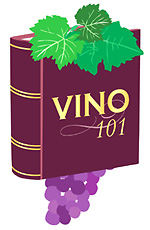 A Server's Perspective
A Server's PerspectiveThe Price is Right
By Jorge Eduardo Castillo
For those of you that read my articles on a regular basis, you know that I like to look at the wine industry from two perspectives: as a consumer looking to purchase wine and as a foodservice employee looking to sell and serve wine.
While analyzing both sides of this coin, I have come to realize an important point: both parties - the consumer and the seller - are often uncomfortable talking about the one thing that serves as the primary motivation for them both: Money.
Most conversations between servers/bartenders and customers regarding wine tend to dance gingerly around the subject of money, yet that is the central focus of both parties. Servers and bartenders are trying to feel out the guest to find out how much they are willing to spend so they know what to recommend, and customers know how much they want to spend on a bottle but won't usually mention the amount. Yet, neither party mentions money once. Kind of strange, isn't it?
I'd like to at least attempt to help both the buyer and seller navigate this tricky exchange as a way to help remove the discomfort in wine-buying situations. After all, wine is fun and so should be buying and selling it. Let's start with the consumer.
Let's make a deal
Believe it or not, as a consumer, you have responsibility in this deal. You know how much you want to spend, so why not tell the salesman, at least in a roundabout way? If you're uncomfortable saying out loud "I'm looking for a bottle in the $60 range," then at least point to something on the list and ask for a recommendation for something in that area.
Servers will pick up on this and it will make their job easier. I think the problem for most people is that they are concerned with looking like a cheapskate as a result of telling someone that money is an issue for them. Well, the reality is that money is an issue for nearly everyone. There is no need to be secretive, whether you're looking to spend $20 or $100 on a bottle of wine, so for the sake of all parties involved, it is best to be forthright from the beginning and make it clear how much you are looking to spend on wine.
Remember, servers and bartenders wait on dozens of people every day, many of who are thrifty and many that spend freely. Nothing you say or do in terms of spending will register with them in terms of the kind of person you are. Your wine budget does not dictate the quality of your person. (In actuality, their opinion of you is probably based on whether you plan to leave gratuity on the wine you order, regardless of price point.) To them, you are one of their guests and they need to 'take care' of you. Always keep that in mind.
Follow the clues
Now, let's look at things from the server or bartender perspective. Some would consider it rude to just come out and ask, "How much are you looking to spend?" For that reason, I recommend avoiding that route.
However, there are certain pointed questions you could ask that will help give you an idea of how much they wish to spend on a bottle. For example: "What do you normally drink?" and "What was the last good bottle you enjoyed?" will give you a decent price range with which to work. If their answer to either of those questions is Yellowtail Shiraz, you know they are economical when it comes to buying wine and you might offend them by recommending a $100 bottle. Conversely, if they say they usually enjoy something like a Joseph Phelps Insignia, you know they don't mind spending a good amount of money on a bottle so go ahead and recommend something comparable.
One of the biggest pitfalls that many foodservice employees make is to prejudge a table when it comes to what they are looking to spend. For example, I know many people that enjoy going out and trying new wines and don't mind spending triple-figures on a bottle. However, they usually dress very casually and often don't get the respect from a server that a group in business suits would.
Try not to guess how much a person is willing to spend by how they look; rather, figure out ways to ask how much they are comfortable with by asking questions that will help you narrow down that range. I encourage you to look at each guest as a blank slate and do the best you can to narrow their range of desired expenditure by opening up a dialogue. Sometimes however, the guest will give you nothing in terms of clues as to what they want to spend. If this is the case, recommend a variety of wines at varying price points to cover all of the options.
Money talks
The bottom line here is that wine costs money. Some wine costs a little, some costs a lot. Each wine drinker has a certain comfort zone when it comes to what they want to spend on a bottle. As both buyers and sellers of wine, we can each make it easier on the other party by getting to the point ... or more important, to the price point.
October 2007
Visit www.vino101.com for more details.
Back to the Vino 101 index page




